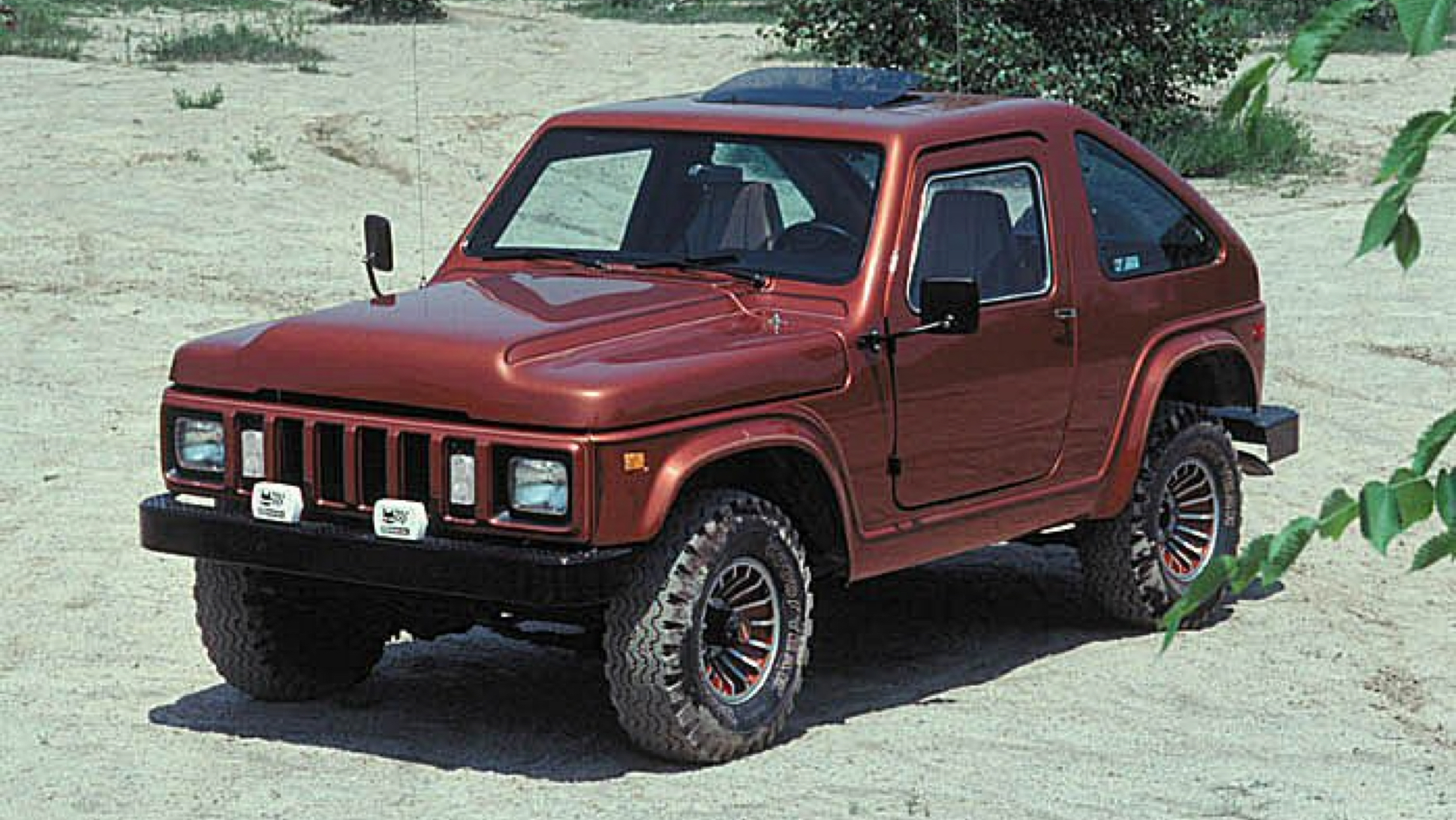

The International Harvester Scout is the beloved precursor to today’s sport-utility vehicles, but they all seem to suffer from one problem, even when they don’t live up north: rust. According to one frequently told but never verified legend cited by Jalopnik, the raw steel purchased by International wasn’t adequately sheltered from the elements before it was used to make Scouts, and thus, some Scouts came with rust from the factory.
Yet rust so common that it births its own lore almost wasn’t an issue at all, at least in terms of the Scout’s body. The original Scout was almost made of plastic instead, according to Truck Trend. Goodyear already had a process to make plastic vehicle bodies when International was designing its first Scout concepts. However, International ultimately deemed the idea to be cost-prohibitive, and stuck to making the Scout out of steel.

International revisited the idea of a composite Scout in its final days as an automaker. By the mid-seventies, composites were starting to sneak onto cars like the Chevrolet Corvette more often. The price of working with composites wasn’t as high anymore, so International green-lit a project to develop composite bodies for the Scout platform, according to Four-Wheeler.
In 1975, International hired composites expert (and fascinatingly, former dentist) Dr. Leo Windecker, who had been working on composite aircraft. Six different concepts for how composite bodies could fit on the Scout platform were presented to the company in 1976, including sleek AMC Eagle-style hatchbacks and even a minivan. (You can see those concept images here.) The “Family Cruiser” two-door SUV was the closest thing to the Scouts we know, but it was the “Sports Enthusiast” concept that eventually became International’s plastic-fantastic concept SUV, the Scout SSV.
SSV stood for “Supplementary Scout Vehicle,” as it was really intended as an enthusiast special to be sold alongside the regular Scout in 1981 with a run of just 4,000 vehicles, per Four-Wheeler. Other sources including MotorBiscuit claim SSV stands for “Scout Supplemental Vehicle,” but the basic idea that this was supposed to be an addition to the Scout line is there. Yet in the absence of many other future-Scouts to point to, many people refer to the Scout SSV as the de facto 1981 Scout.
The first Scout SSV prototype was built on a shortened 95-inch Scout chassis and featured an angled rear hatch. The composite was made out of long-strand fiberglass and epoxy resin, per Hemmings. According to Four-Wheeler, the first composite bodies were shipped off to International’s Fort Wayne, Indiana plant in 1977, and were quickly thrown together for testing.

That same prototype was later dressed up as a show car to make the rounds at events, dealerships and the like. Behind the scenes, International prepped even more SSVs for crash testing and kept developing the truck, as Four-Wheeler explains:
“By October 1978, the SSV had evolved into a hatchback coupe with hard doors mounted on a standard 100-inch wheelbase Scout chassis… The Coupe body was highly revised from the [original 95-inch prototype], going from a seven-piece assembly to 16 parts. At least three Coupes were finished out as demonstrators, but most were destined for road or crash tests. It isn’t clear whether any Coupes were crash tested. Photographic evidence and surviving SSV chassis indicate at least four crash-test Coupes were assembled, but likely there were more. About 30 SSVs of both types are estimated to have been built.”
Unfortunately, International’s Scout division went up for sale in May 1980. Production of the Scout stopped forever when the last Scout rolled off the line on October 21, 1980. Finding one today would be nearly impossible, as the SSV never went on sale to customers. International Harvester didn’t want to sell its prototype fiberglass SSV bodies, so most were simply disposed of, with their chassis being sold separately for parts. According to Four-Wheeler, only two complete SSVs were known to have survived, along with three partially complete SSV 100-inch chassis and two composite bodies. (They also have a whole gallery of one of the surviving SSVs here.)
Jalopnik notes that there was also a more conventional Scout III prototype in the works for the 1984 model year that was a bit more like the regular Scout, with cleaner lines and a longer wheelbase, which you can see here. However, this was just a clay model when International bowed out of automotive production in 1980. The SSV lives on in many hearts as the “1981 Scout,” and represents the neat Scout we could’ve had if International had kept building SUVs: one that wasn’t so prone to rust.
Got a tip? Send us a note: tips@thedrive.com